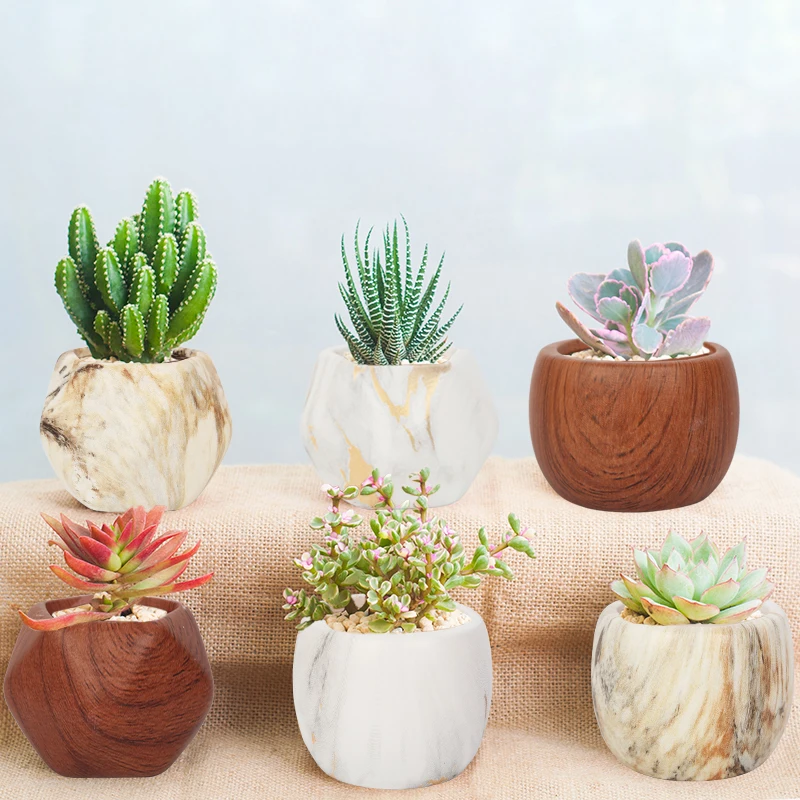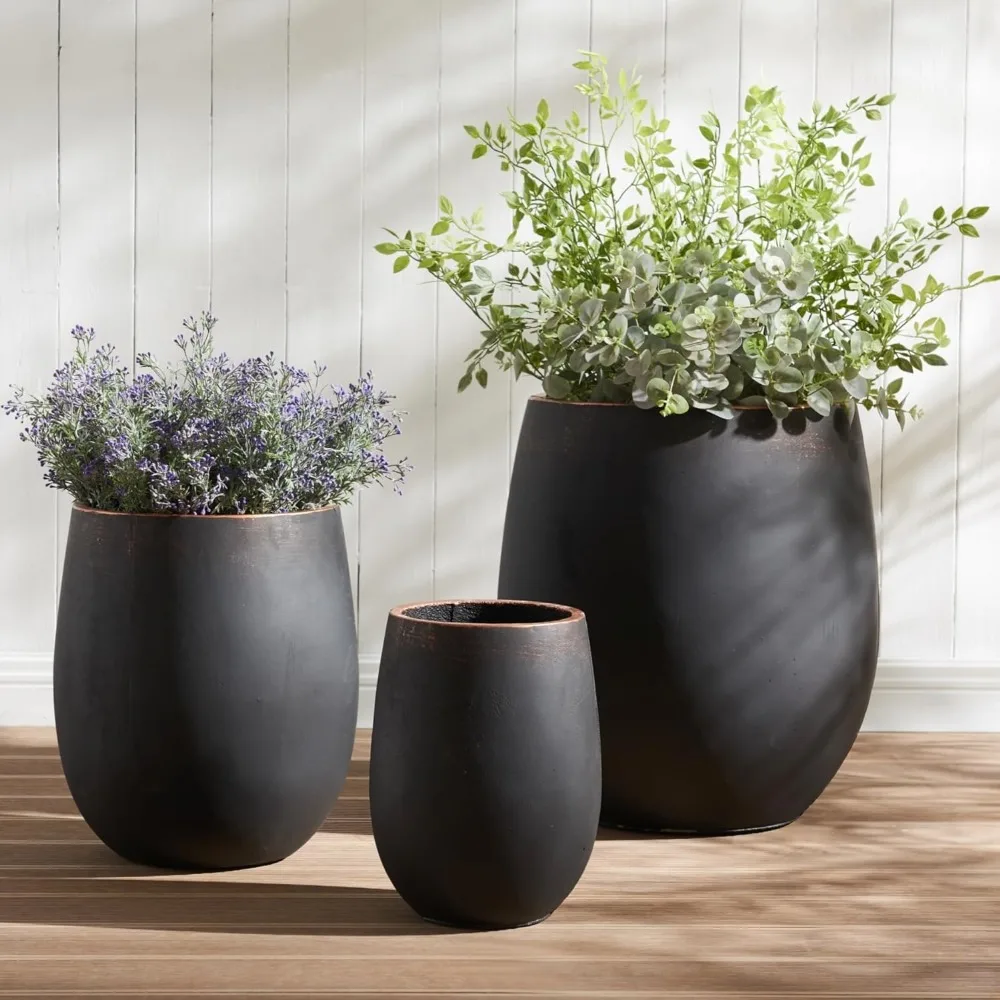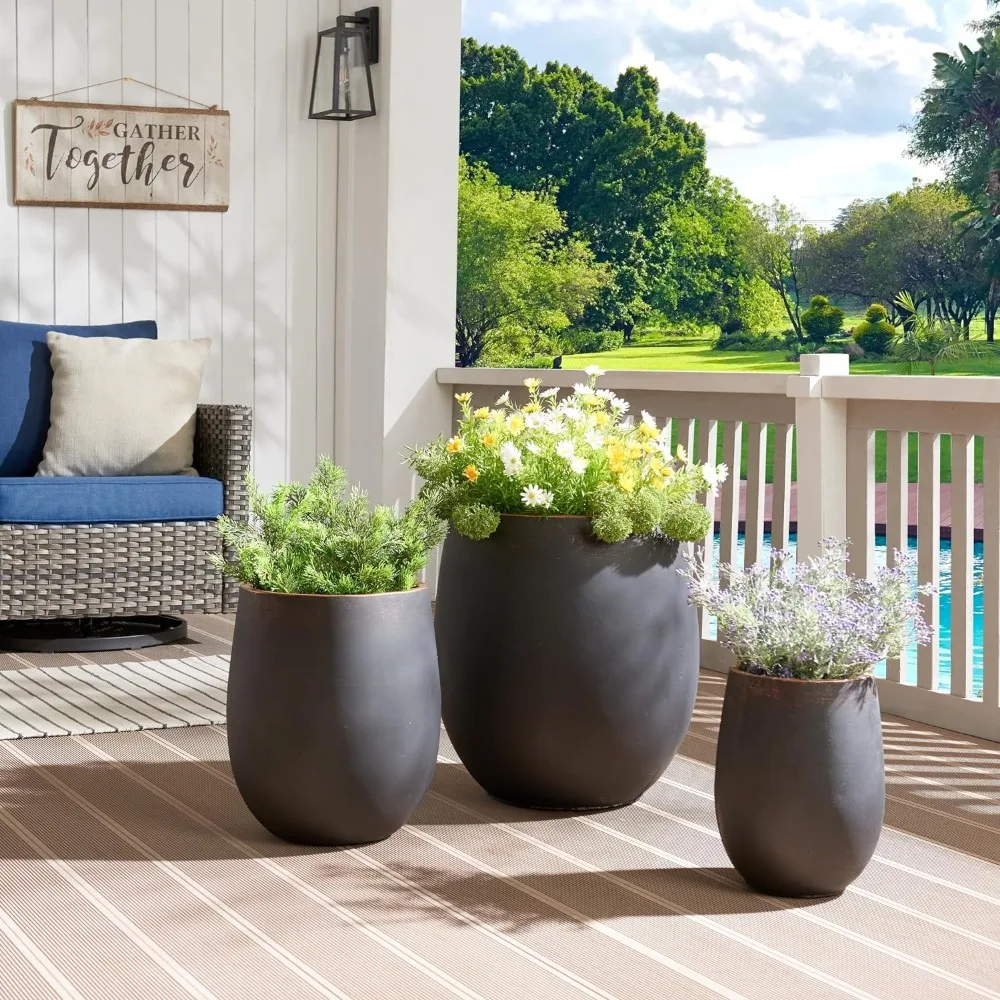Introduction to Pot Measurements
If you’re a plant lover or a gardening enthusiast, understanding how to measure flower pots is essential. Selecting the proper pot size is not only crucial for the aesthetics of your space but also for the health and growth of your plants. In this guide, we’ll explore the various aspects of pot measurements and why they matter.
Measuring flower pots accurately ensures that your plants have adequate room to grow without being constrained or, conversely, overwhelmed by too much space. Incorrect sizing can lead to issues such as stunted growth for the plant, or waterlogging due to excessive soil retaining moisture. Knowing the ins and outs of pot measurements can save you from these common gardening pitfalls.
Whether you’re dealing with round, square, or rectangular pots, we’ll provide you with easy-to-follow techniques for determining the right dimensions. We will explain how to measure the diameter of round pots, and the length and width for square and rectangular ones, assuring that you have accurate figures to work with.
We’ll delve into the methods for calculating pot volume, crucial for understanding how much potting soil you’ll need. Plus, we’ll touch on how to handle tapered and oddly shaped pots, which can be a bit trickier to size up. Armed with this knowledge, you’ll be well on your way to perfectly sizing up flower pots for your gardening endeavors.

Importance of Correct Pot Size
Selecting the right pot size is vital for plant health. It influences root development, water retention, and nutrient access. Too small pots restrict roots, causing stunted growth and possible root damage. Oversized pots may lead to waterlogging and root rot. Proper sizing maximizes plant health and aesthetic appeal. Accurate measurements ensure the right fit for both plant and space. It’s a crucial step for gardening success.
Measuring Round Pots
Proper measurement is key for round pots to ensure plant health and fit. That’s why we’ll walk you through simple steps to find your pot’s diameter and calculate its volume accurately. This will help you pick the perfect pot for your plant and understand how much soil you’ll need.
Diameter Measurement Techniques
To measure the diameter of a round pot, take a tape measure or a ruler and stretch it across the pot’s top rim. Ensure you measure from the inside edge to the inside edge, not the outer lip. If your pot isn’t filled with soil, it’s even easier, as you can place the pot upside-down on a flat surface. Finding the widest point is crucial for exact sizing.
For the best fit, especially when selecting a saucer, add an extra inch or two to your measurement. This will account for any slight size variation and make sure your pot sits comfortably within the saucer. Remember, precision in these numbers helps with healthful plant growth and suitable space planning.
Calculating Volume for Round Pots
Knowing your round pot’s volume is useful for determining the right amount of potting mix. First, measure the pot’s height from the inside bottom to the top rim. With the diameter and height in hand, you can calculate the volume using the formula: volume = π * radius^2 * height.
To simplify, take the diameter, divide it by two to get the radius, and then square this number (multiply it by itself). Multiply this by the height of the pot, and finally by π (approximately 3.14). This calculation will give you a reliable estimate of soil needed, in cubic units, such as inches or centimeters.
Measuring round pots correctly sets you up for gardening success by ensuring you choose the right pot size and quantity of soil for your plants.
Measuring Square and Rectangular Pots
It plays a critical role in ensuring the health of plants. Accurate measurements help gardeners figure out the correct pot size and soil volume needed.
Dimension Measurement for Square Pots
To measure square pots, simply measure the length and width at the top inside opening. For rectangular pots, follow the same steps. Use a ruler or tape measure to get the inside edge-to-edge measurements. Do not include the outer lip in these numbers. This ensures precision for fitting the plant and calculating soil volume. Write down these figures before moving to the volume calculations.
Volume Calculations for Non-Round Pots
Calculating the volume of square and rectangular pots involves a simple formula. Multiply the length by the width and then by the depth of the pot. Ensure you measure the inside depth from the bottom to the top rim. Do these measurements in the same units, for example, inches. This process will give you the volume in cubic inches. Keep these measurements accurate for effective soil volume estimates.
Knowing how to measure your pots properly will help you choose the best size for your plants. It also prevents common problems caused by incorrect pot sizing, such as restricted root growth or waterlogged soils.

Measuring Tapered and Oddly Shaped Pots
Measuring tapered and oddly shaped pots can seem challenging. Unlike the standard shapes, these pots have unique curves and angles. Here are simple steps to gauge them correctly:
Steps for Measuring Tapered Pots
Firstly, measure the top diameter. Start at the widest part, inside edge to inside edge. Next, measure the base diameter. Place the pot upside down if needed. Then, note the height from bottom to top edge internally. Lastly, consider the shape when estimating soil volume, as it’s not uniform.
For the best results, measure several times. This ensures accuracy despite the pot’s irregular shape. If the pot is full, try to approximate the pot’s dimensions based on visible parts.
Tips for Oddly Shaped Pots
Oddly shaped flower pots need a different approach. Start with the widest points across for length and width. Measure depth at the highest point. Then estimate volume by visualizing the pot as a similar regular shape. It won’t be exact but gets you close.
If possible, ask for the manufacturer’s dimensions. They often have precise data for their uniquely designed pots. This info might be available on the pot or the store’s website.
Remember, when measuring non-standard pots, it’s okay if your sizes are slightly off. What’s important is avoiding drastic size mismatches that can harm plant health.
The Impact of Incorrect Pot Sizing
Choosing the right pot size is not just about aesthetics; it’s vital for your plant’s growth and health. Incorrect pot sizing can lead to a range of issues that can impair the plant’s ability to thrive. Let’s explore what can happen when a plant is placed in an improperly sized pot and how to avert these potential problems.
Problems with Too Small Pots
Plants in pots too small may encounter several difficulties. Roots quickly fill the limited space, leading to a condition known as being ‘root-bound’. This restricts the plant’s growth, as the roots have nowhere to expand. Additionally, small pots can’t hold much soil, which means nutrients are quickly depleted, and the plant may not get the food it needs to grow. Watering becomes a challenge too; water might run off too quickly, not giving the roots enough time to absorb moisture. Furthermore, small pots can tip over easily, especially if the plant grows top-heavy.
Issues with Oversized Pots
On the flip side, flower pots that are too large for a plant pose problems as well. Excessive soil in a large pot retains too much water. This damp environment is perfect for root rot and fungal diseases, which are harmful to plant health. Large pots also make it difficult for plant roots to reach and absorb nutrients effectively. Plants can concentrate their energy on root growth, but neglect developing foliage and flowers. It’s also worth noting that large flower pots are heavier and harder to move, which may be a practical concern. Plus, they require more soil, which is an additional expense and might be wasteful if not needed.
In conclusion, picking a pot that’s just the right size is critical. It ensures that your plants have the space they need to flourish, without the risks that come with incorrect sizing.
Comprehensive Plant Pot Sizes Guide
Navigating through plant pot sizes can seem daunting. Yet, it’s a task that can decide your plant’s future health and beauty. This guide simplifies pot sizes, breaking them down by dimensions, so you can make smart choices.
Small Plant Pot Dimensions
Small pots range from 2” to about 14” in diameter. They fit small herbs, flowers, and some annual plants well. Perfect for windowsills and small spaces, these pots allow for easy management of delicate plants. Ensure your small pots have good drainage to prevent water buildup.
Medium Plant Pot Sizes
For larger herb plants, flowers, and small bushes, medium flower pots are ideal. These range between 14” and 24” in diameter. They offer more soil, which means more nutrients and space for plant roots to spread. Check medium-sized pots for even water distribution and proper soil depth.
Large Plant Pot Measurements
Starting at 24” in diameter, large pots house trees and large shrubs. They provide ample room for root growth and stability for larger plants. When choosing a large pot, consider its weight and the maintenance it might require. Ensure these pots have efficient drainage for healthy root systems.
In each pot size, the number of plants and the type of plants you can house varies. Always match the plant’s root size and growth pattern with the pot’s size. This way, you keep the plant healthy and manageable. Keep these dimensions in mind next time you’re shopping for pots.

Selecting the Right Pot for Your Plant
Choosing the right pot is key for plant health. It’s not just about the pot size but also the plant’s needs. Make sure to consider the plant’s root system and growth habits. Look for pots that support these aspects to ensure your plant thrives.
Understanding Plant and Pot Compatibility
Matching plants to the right flower pots vital for growth. Assess your plant’s root size and how fast it grows. Pick a pot that supports this growth without being too big or small. Check the material of the pot as well. Some plants prefer breathable materials like terracotta, while others do well in plastic.
Tips for Multiple Plants in One Pot
Planting more than one plant in a pot can look great. Ensure there’s enough space for each plant’s roots. Avoid overcrowding, as this can lead to competition for nutrients and water. Also, plant similar plants together that have the same watering and light needs. This ensures they all get the care they need.
Concluding Notes on Pot Measurements
As we wrap up our guide on how to measure flower pots, let’s revisit key takeaways. Proper pot measurement is crucial for plant health and space fit. Whether round, square, or oddly shaped, accurate sizing ensures your plants have room to grow and thrive. Always opt for a pot size that matches your plant’s needs, considering root growth and watering habits. Avoid pots too small or too large to prevent growth issues. Keep in mind, volume calculations are essential for the correct amount of soil. When in doubt, measure twice, or consult pot manufacturer dimensions. Happy planting with the right pot for every plant!